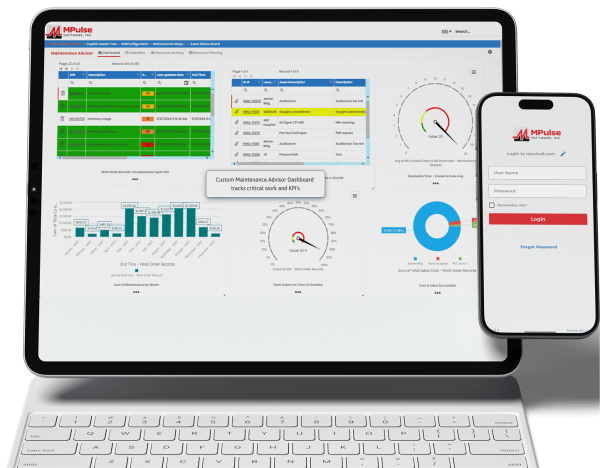You know CMMS software can help your maintenance team. However, you need to convince others in your organization. But your stakeholders may be interested in other factors than your maintenance department’s software success. We are here to help you successfully pitch CMMS to your team.
When it’s time to make your pitch, watch out for these potential roadblocks.
Table of Contents
Roadblock #1: Not Listening to Stakeholder Concerns
The CMMS buying process includes numerous stakeholders, including your users and managers, but also key people from the IT, procurement, financial, and legal/compliance departments.
It’s vital you listen carefully to their concerns during this process. You can prepare by thinking about how maintenance management software will impact each role. Start with these three questions to help you avoid pitfalls.
- How is this program likely to affect each person’s daily workload positively or negatively?
- How might this program threaten each person’s job, work performance, or domain of responsibility?
- Is it possible that this person might have emotional reasons to oppose the program? What could they be?
Answering these questions will help you address their concerns before they become roadblocks in your way. Think about how helping others achieve their goals will make them look good, which will motivate them to nurture and support your CMMS implementation efforts.
Roadblock #2: Missing Stakeholders or Including Them Too Late
A closely related roadblock is missing stakeholders or including them too late. If you’re the one in your organization tasked to find software, don’t underestimate the importance of knowing your internal audience. You’ll need to meet both their business and emotional needs if you hope to be truly successful in your procurement and implementation.
Often, simply involving stakeholders in the buying process at the appropriate time can prevent many issues.
Take these three steps to make sure you’re covering all your bases…
- Make sure you know your stakeholders in the software buying process and do your best to meet their needs.
- Do your homework—take the time to know and understand your stakeholders and their motivations.
- Listen to and understand their needs. Then address these needs directly.
For example, Finance is the department responsible for the budget, typically headed by a Controller or CFO. Including Finance early in your process can prevent show-stopping holdups down the line. Mostly, this amounts to making a courtesy call to ensure funding has been approved. Doing so will help you validate there’s money earmarked in the budget to make the software purchase.
Roadblock #3: Not Understanding Organizational Values
You’ve probably already done a lot of research on CMMS software, but you also need to research what your organization values. Upper management usually looks at the achievement of quantifiable goals. For example, that could include…
- Units produced
- Savings generated
- Revenue generated
- Net gain in productivity
- Quality (measured in various ways)
- Cycle time
For example, count on your company’s management to care about the return on investment (ROI) for CMMS software. CMMS will affect the organization’s numbers—especially the ones important to them. They’ll need assurance that the new software will impact performance in a positive direction.
We recommend simply asking. Sometimes just making the effort to find out what’s most important will be enough. And you’ll likely come away from the discussion with a much clearer idea of what they’ll want from a maintenance software solution.
A few good questions to start with:
- What key business metrics do you watch most closely?
- What top three things would you want to achieve with a new CMMS?
- How would you like the CMMS to improve company performance?
- Does the product need to include certain reports?
Roadblock #4: Underestimating Your IT Department
Whatever solution you buy, IT Managers know they’ll be required to provide technical support at some point. Even hosted/cloud solutions require access through your organization’s network. That’s IT’s domain.
IT managers are likely to care very little about how much software costs, or even how much it will improve company performance. They’re much more likely to ask questions like…
- How will it impact my IT infrastructure and to what extent?
- Will I be required to provide technical and usability support?
To win over these stakeholders, you’ll need to reassure them that the CMMS solution you’ll choose is designed to integrate seamlessly with existing infrastructure and won’t place undue demands on their network. They also need to know that your vendor has excellent user support, current technology, and rock-solid security features.
Don’t hesitate to voice these concerns to sales reps when shopping for software. Most will be glad to arm you with all the information you need to fend off any IT concerns. They’ll likely also be happy to speak directly with your IT manager, if that’s a better approach.
Roadblock #5: Not Following the Rules
Another roadblock in the software buying process is whether or not you know the administrative steps to follow. Familiarizing yourself with how the purchasing process works will avoid delays and bureaucratic roadblocks.
Do your due diligence on questions like…
- What are the key things you need to understand?
- Which forms do you need to fill out?
- What “gotchas” do you need to avoid when filling out the forms?
- How does procurement issue a purchase order from your company to the software vendor?
- What’s the lead-time from purchasing decision to issued order?
It doesn’t hurt to get to know the people responsible for enforcing these rules early in your search for software. An established relationship and a proactive approach may save you weeks when it’s time to actually make the purchase.
For example, Legal and Compliance departments make sure laws, policies, and regulations are followed. Their job is to ask a couple specific questions:
- Are we abiding by legal/governmental regulations?
- Are we abiding by internal company policies and guidelines?
Again, think “courtesy call.” Make sure concerns are heard before you get too far into the buying process. Your goal is to avoid late-stage show-stoppers that may derail your procurement.
Roadblock #6: Not Explaining the Benefits
Users are any staff that’ll be operating the software in their day-to-day jobs. A system that’s difficult to learn and navigate won’t be adopted quickly by the people who’ll be logging in the most. And unused software will never produce the desired results.
It’s important to explain the benefits of CMMS software to users early on. To avoid becoming a victim of poor user adoption, you need to…
- Listen—and develop an understanding of the users’ concerns. Ask some probing questions to understand what users like and don’t like about the programs they currently use.
- Do your homework. Be sure to vet all potential solutions for usability based on what you learned from your discussions with users.
- Evangelize the merits of the chosen solution—prior to implementation. Explain to users what it does and how it does it. Sometimes establishing the right expectations is half the battle.
- Be sure to purchase good training and let users know about it. Before go-live day, ensure all key users have been trained.
Follow these steps, and you’ll dampen the fears of even the most skeptical or hesitant users.
When it’s time to pitch CMMS software to your team, a little proactive work can go a long way.
MPulse can help guide you through this process. Contact our CMMS experts for help.
[related-content]






